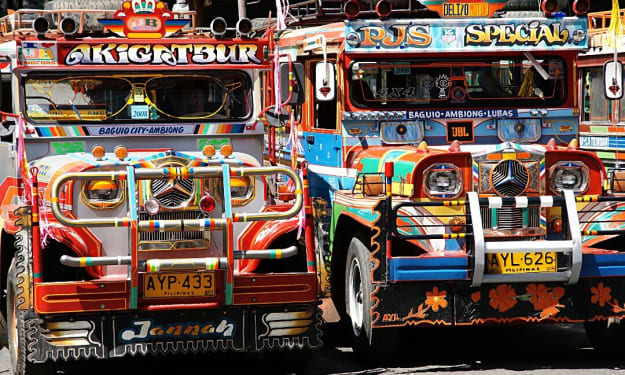Caste is a real issue among Indian Muslims. So, why are they being denied a reservation?
Caste is a real issue among Indian Muslims.

Traditionally, Abrahamic religions, including Islam, have been thought to be egalitarian and to oppose caste or other forms of inequality. Scholars frequently quote Prophet Muhammad's farewell khutbah, in which he famously stated, "There is no superiority of an Arab over a non-Arab, nor of a non-Arab over an Arab, nor of a white person over a black person, but on the basis of personal piety and righteousness."
The story of an Ethiopian slave named Bilal, who rose to become the first muezzin of the Islamic world due to his wonderful voice and piety, is also used to support the case. While prejudice cannot be traced back to Abrahamic scriptures, as in the case of Hinduism, the existence of caste among South Asians (regardless of their religion) is a regrettable reality.
Not a Hindu problem alone-
Most Indians think of caste as a Hindu issue, and I was no exception. Years ago, while reading Twilight in Delhi, Ahmed Ali's well-known novel set in Purani Dilli (Old Delhi), the truth of Brahmanism in Islam (also known as 'Syedism' in the Islamic context) hit me like a tonne of bricks. Asghar, one of the central protagonists, falls in love with Bilqeece, a girl from a lesser caste. Asghar's father, Mir Nihal, a self-identified Ashrafi (a higher caste), cautions him against marrying a girl from a lower caste because it would go against their social dignity.
A clear stratification-
Muslims in India are divided into three castes. The Ashrafs (literally, 'nobles,' who trace their ancestry to inhabitants of the Arab peninsula or Central Asia or are converts from Hindu upper castes), Ajlafs (literally, 'commoners,' who are said to be converted from Hindu lower castes), and Arzals (literally, 'despicables,' who are said to be Dalit converts) are at the top of the pyramid.
The Hindu Dalits and Muslim Ajlafs/Arzals are united in their grief, as they say. Both the Sachar Committee Report and the Ranganath Mishra Committee Report have shown a number of abuses and discriminations that a typical Muslim Ajlaf/Arzal faces on a daily basis, including social segregation, untouchability, restricted or no access to education, and underrepresentation. These reports back up the old Bahujan movement's cry, "Dalit-pichda eksaman, Hindu ho ya Musalman."
A colonial hangover-
For the first time, the Census of India, 1901, recognised such stratification among Muslims, noting 133 social groups that were entirely or partially Muslim. In Uttar Pradesh, the 1911 Census recognised 102 caste divisions among Muslims, with at least 97 of them belonging to the non-Ashraf category. The government of India (Scheduled Caste) Order, 1936 (hereinafter 1936 Order) adopted the term "Scheduled Caste" to refer to those people formerly described as "depressed classes."
By way of Constitution (Scheduled Castes) Order No. 19 of 1950, Indian legislators crystallised the concept of'scheduled caste' after casting off the British yoke (hereafter 1950 Order). It's worth noting that both the 1936 Order (implicitly) and the 1950 Order (explicitly) assumed that caste was peculiar to Hindus.
"The 1950 Order expressly stipulates in paragraph 3 that "no person who professes a religion other than the Hindu [Sikh or Buddhist] religion shall be deemed to be a member of a Scheduled Caste," notwithstanding anything specified in paragraph 2. This essentially means that no one from any other faith may claim to be a'scheduled caste' and hence benefit from its advantages, with the exception of Hindus, Sikhs, and Buddhists.
Nothing could possibly be further from the truth. The Ajlafs and Arzals, like their Hindu counterparts, the Dalits, are on the verge of extinction. Both the Sachar Committee and the Ranganath Mishra Committee have proposed that some Muslim caste groups be recognised as "scheduled castes," as previously mentioned.
Despite the fact that certain Muslim castes are categorised as Other Backward Classes (OBC) under the 27 percent quota, the harm they have suffered as a result of the 1950 Order is insufficiently mitigated by this consolation prize. The 'Schedule Caste' classification is more accessible to affirmative action by the government because of constitutional guarantees of reservations.
Of laws and prophets-
According to the records of the Constituent Assembly, the founding fathers apparently assumed that non-Hindus were somehow immune to caste systems. Separate electorates for Muslims and their inclusion in the concept of 'backward classes' were the focus of the hot controversy at the time (which later came to be known as OBCs).
In the first part, the constitutional courts ruled that when a person converts to a non-Indic religion like Islam, his or her caste vanishes completely. This is because non-Indic religions like Christianity and Islam do not recognise the caste system. As a result, they will be exempt from the protection and affirmative action measures that apply to Scheduled Castes.
This doctrine experienced a tectonic shift in the 1970s, when the Supreme Court in Arumugam v. S Rajgopal took a different perspective of vertical caste, declaring that caste does not vanish but is "eclipsed" upon conversion. With Arumugam, the test for "retaining" caste after conversion became a matter of "fact" (above).
Bettering the Soosai judgement-
Several petitions challenging the constitutionality of the 1950 Order have been pending before the Supreme Court since 2004, dating back to the Soosai (supra) era. In January 2020, Chief Justice of India Sharad Arvind Bobde stated that the societal exclusion of Christians and Muslims from the Scheduled Caste deserves attention.
The Supreme Court will have to decide whether the 1950 Order violates Article 14 of the constitution by failing the test of reasonable classification in that it divides people into two groups: Hindus, Sikhs, and Buddhists as one integrated group, and others, for the purpose of affirmative action, without having intelligible reasoning (as even Muslims and Christians also face similar caste-based discrimination). The issue of justice for Dalit Muslims is a litmus test for the Indian constitution's declared egalitarian objectives.
Gandhi praised Dalits by calling them "Harijans" (people of God). He had obviously overlooked their Muslim counterparts. "We are little men serving big causes," Jawaharlal Nehru once said, "but since the cause is great, something of that greatness falls upon us as well." If Justice Bobde's court can correct this injustice, they will be doing a wonderful service. As a result, the Constituent Assembly, Soosai, and Gandhi will all be better.
About the Creator
Paramjeet kaur
Hey people! I am my own person and I love blogging because I just love to share the small Stories






Comments
There are no comments for this story
Be the first to respond and start the conversation.